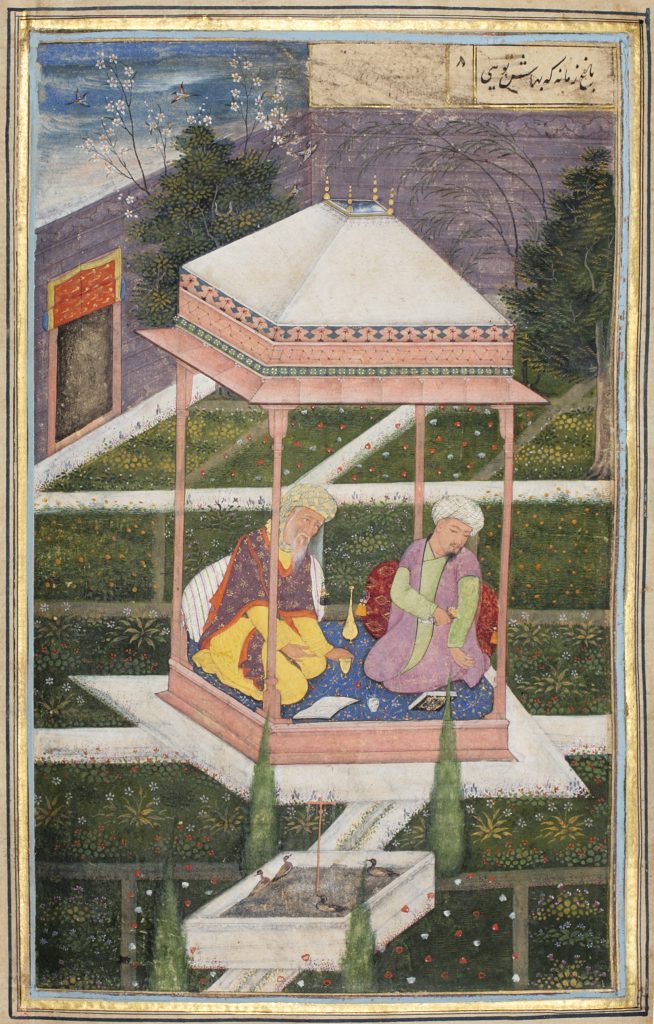



Title: A Khamsah of Nizami for Prince Awrangzeb
Date: possibly 15th century (text); 1640–45 (illustrations)
Location: possibly Iran (text); Mughal India (illustrations)
Materials: ink, gold and opaque watercolour on paper; modern binding
Dimensions: 275 folios; 26.5 x 16.5cm; 24 full-page miniatures, 17.1 x 9.9cm (average)
Accession Number: MSS 1023
Other Notes:
The appearance of the text and the style of the illumination in this copy of the Khamsah (‘Quintet’) of Nizami strongly suggest a 15th-century Iranian origin for the volume. However, it has been suggested – based on the name of the scribe, Yusuf al-Kashmiri – that the text may possibly have been copied in India in the early 17th century. The 24 illustrations, on the other hand are clearly Mughal in style.
Although the volume lacks an explicit dedication to Awrangzeb (folios are missing at the beginning and end of the manuscript), four of the illustrations to the Haft paykar (the Seven Princesses in their pavilions and the tales they tell) depict Awrangzeb in the guise of its hero, Bahram Gur. In later life Awrangzeb became known for his austerity, but in his youth he shared the tastes of other Mughal princes for illustrated romances.
The miniatures
Script:
text copied in nasta‘liq, with 20 lines to the page arranged in 4 columns
Bibliography:
L. York Leach, Paintings from India, The Nasser D. Khalili Collection of Islamic Art, volume VIII, London 1998, cat.30, pp.96–109.
J.M. Rogers, The Arts of Islam. Masterpieces from the Khalili Collection, London 2010, cat.328, p.280.
Zoom
Close

Create your own collection of artworks that you can print or save as a PDF. Please enter you email to enable feature.
Small Flask | JLY 1075
Has been added to your collection.
TIP:
You can now access and view your collection from the main menu at any time.